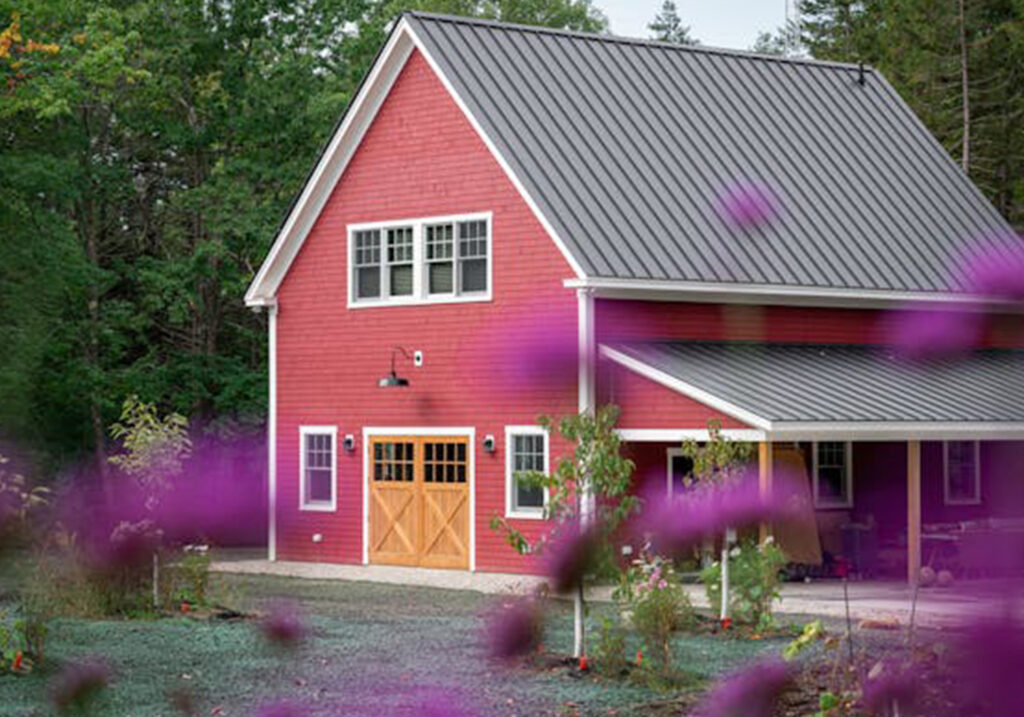Metal is a favorite building material within the construction industry, and for a reason: it is a durable, cost-effective material that is easily available to everyone. Using steel even extends to building barns.
A metal barn is a versatile and durable structure that can serve a variety of purposes, from agricultural storage to housing livestock and even functioning as a workshop or garage. Designing a metal barn requires careful planning to ensure it meets your specific needs while also being structurally sound and efficient. The right features will enhance functionality, improve durability, and ensure that your investment remains useful for years to come.
Choosing the Right Size and Layout
One of the first considerations when designing a metal barn is determining the appropriate size and layout. The structure should be large enough to accommodate all intended uses, whether that includes housing animals, storing feed and equipment, or providing space for work activities. The dimensions of the barn will depend on factors such as the number of animals you plan to shelter, the type of machinery you need to store, and any additional areas you may need for offices, storage, or workshops.
The layout should allow for smooth workflow and efficient use of space. For example, livestock barns should have well-defined sections for feeding, milking, and resting areas, while storage barns need designated spaces for equipment, feed, and tools. Clear pathways and easy access points are essential to avoid congestion and facilitate movement.
Strong and Durable Framing
The framework of a metal barn is the foundation of its durability. Choosing high-quality steel framing will ensure the structure can withstand harsh weather conditions, including strong winds, heavy snow, and even seismic activity. Steel frames are resistant to pests, fire, and rot, making them a superior choice over traditional wooden barns.
It’s important to select the appropriate gauge of steel based on the structural requirements of the barn. Heavier gauges provide added strength and stability, which is particularly important for larger barns or those in areas with extreme weather conditions. Reinforcing critical points such as the foundation, support beams, and roof trusses will further enhance the barn’s longevity.
Proper Ventilation and Airflow
Ventilation is a crucial feature in metal barns, especially when they are used for housing livestock or storing perishable goods. Without adequate airflow, barns can become excessively humid, leading to mold growth, respiratory issues in animals, and deterioration of stored materials.
Ventilation options include ridge vents, sidewall vents, exhaust fans, and large doors that allow for cross-ventilation. A well-designed ventilation system will ensure that fresh air circulates throughout the barn, maintaining a comfortable and healthy environment for animals and workers alike.
Weatherproof Roofing and Insulation
The roof of a metal barn plays a key role in protecting the interior from the elements. Choosing a high-quality, weather-resistant roofing material will prevent leaks, reduce heat absorption, and provide long-term durability. Options such as galvanized steel roofing with anti-corrosion coatings can extend the lifespan of the structure while reducing maintenance needs.
Insulation is another essential feature to consider. Metal barns can become extremely hot in the summer and cold in the winter without proper insulation. Installing insulation in the walls and roof helps regulate the indoor temperature, making the barn more comfortable for livestock, workers, and stored items. Spray foam, fiberglass batts, and rigid foam boards are some of the most effective insulation options for metal barns.
Durable and Secure Doors
Doors are a critical component of any metal barn, affecting both accessibility and security. Depending on the barn’s purpose, different types of doors may be required. Large roll-up or sliding doors are ideal for equipment storage barns, allowing easy access for tractors and other heavy machinery. Smaller, insulated doors may be preferable for livestock barns to help maintain temperature control.
Security is also a factor to consider when choosing barn doors. Heavy-duty locks, reinforced steel doors, and even automated locking systems can help protect valuable equipment and livestock from theft or unauthorized access.
Adequate Lighting Solutions
Lighting is essential for both functionality and safety within a metal barn. A well-lit barn ensures visibility for workers, improves security, and creates a more comfortable environment for livestock. A combination of natural and artificial lighting is ideal. Skylights or translucent panels can bring in natural daylight, reducing energy costs during the daytime. LED lighting is an energy-efficient option for nighttime illumination, providing bright and long-lasting light without excessive heat production.
Motion-sensor lights around the exterior of the barn can enhance security by deterring trespassers and making it easier to navigate the area at night.
Efficient Drainage and Flooring
Proper drainage and flooring systems are often overlooked but are essential for maintaining the longevity and functionality of a metal barn. Without adequate drainage, rainwater and waste can accumulate, leading to structural damage and unsanitary conditions.
Installing a sloped concrete floor with drainage channels can help direct water away from the barn, preventing pooling and reducing the risk of slips and falls. Gravel or compacted dirt flooring may be suitable for some areas of the barn, but sealed concrete provides better durability and is easier to clean.
For livestock barns, using rubber mats or bedding over the flooring can provide additional comfort and reduce stress on animals’ joints.
Climate Control and Insulated Walls
For barns that house livestock or sensitive equipment, climate control is a valuable feature. Temperature fluctuations can negatively impact animal health and cause damage to machinery or stored items. Installing HVAC systems, exhaust fans, or space heaters can help regulate indoor temperatures year-round.
Insulated walls further enhance temperature stability while also helping to control noise levels within the barn. This is particularly important for operations that require a quiet, controlled environment, such as dairy barns or workshops.
Pest Control Measures
Metal barns are naturally resistant to termites and rodents compared to wooden structures, but they are not completely immune to pest infestations. Birds, insects, and small animals may still find ways to enter the barn if preventive measures are not in place.
Sealing gaps, installing mesh screens over vents, and using pest-resistant insulation can help reduce the risk of infestations. Keeping food storage areas sealed and maintaining cleanliness will further deter unwanted pests from entering the barn.
Storage and Organization Features
A well-designed barn should include designated storage areas for tools, feed, equipment, and other necessities. Built-in shelving, overhead storage, and enclosed cabinets can help keep the space organized and prevent clutter from accumulating.
For barns that house livestock, separate feed storage rooms with moisture-resistant bins can keep food fresh and protected from pests. Workbenches and tool racks can enhance efficiency for those using the barn as a workshop or repair station.
Fire Safety Features
Fire safety is a major consideration in any barn design. Although metal barns are fire-resistant compared to wooden structures, the presence of hay, electrical wiring, and fuel storage still poses a fire risk. Installing fire extinguishers, smoke detectors, and sprinkler systems can help prevent and mitigate fire hazards.
Properly wiring the barn with fire-resistant materials and keeping flammable items stored safely away from heat sources will further reduce fire risks.
Accessibility and Expandability
When designing a metal barn, it’s wise to think about future expansion. Modular designs that allow for additional sections, extra storage, or new stalls provide flexibility as your needs change over time.
Accessibility is another important factor. Wide entry points, clear pathways, and ramps for loading and unloading equipment can enhance usability. If the barn will be used for commercial purposes, compliance with accessibility regulations should be considered in the design.
Conclusion
Designing a metal barn requires careful planning to ensure that it is functional, durable, and efficient. From selecting the right materials and layout to incorporating essential features such as ventilation, insulation, and security, every detail contributes to the barn’s overall performance. By including these key elements in your design, you can create a barn that not only meets your current needs but also provides long-term value and adaptability for the future. Whether used for livestock, storage, or workshops, a well-planned metal barn is a valuable investment that will serve you well for years to come.

